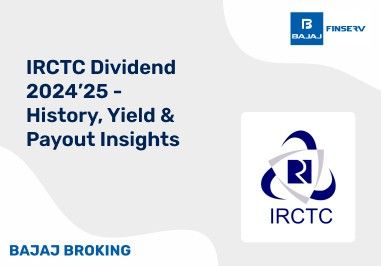BAJAJ BROKING
Tankup Engineers IPO is Open!
Open a Free Demat Account
Trade Now, Pay Later with up to 4x
Track Market Movers Instantly
A Guide for Understanding How to Differentiate Between Undervalued and Overvalued Stocks
Synopsis:
Trading in the stock market requires a keen understanding of stock valuation to distinguish between overvalued stocks, which may be poised for a decline, and undervalued stocks, which hold hidden growth potential. This blog deals with the characteristics of undervalued and overvalued stocks, providing some key methods to identify promising undervalued stocks for short-term trading.
Introduction
The Indian stock market has many options for investing. But with all these options, how do you identify which stocks will grow? It is important to understand the difference between overvalued stocks that may decrease in value and undervalued stocks that have unseen promise. This blog reveals five main methods for finding such promising stocks, understanding how to plan short-term stock trading with them, and helping you create a strong set of investments for the future. Although practicing paper stock trading can be useful, it is important to keep in mind that it differs from investing in the actual market.
What are Undervalued Stocks?
A stock priced lower than its true worth is known as an undervalued stock. These secretly valuable stocks could perform better than the market over time. While it might be difficult to determine their true value, these underpriced stocks are often sold for less than what they are truly worth. Recognizing the best-undervalued stocks is a smart action for investors who look for shares that might increase a lot in value. Learning about the important metrics of stock valuation, and not just looking at an online list of "most undervalued stocks" is essential to make knowledgeable choices about investing.
Additional Read: How To Find Undervalued Stocks In India
What are Overvalued Stocks?
At the other end of the spectrum, you will find overvalued stocks. These stocks have a market price much higher than what they are worth. This could be because of factors such as short-term hype or optimism about a company’s market performance. If the stock looks too good to be true, it probably is. Traders who own overvalued stocks with excessively high prices bear the risk of losses owing to price correction at a later stage. Think about purchasing a share similar to a balloon – puffed up more than its real value. It may look attractive, however, there is a risk it could pop and cause possible financial loss. Instead of strategies for trading stocks in the short term that aim at earning a quick buck, it is wise to find undervalued stocks for building your portfolio.
How to Find Undervalued Stocks?
The following are some important steps to prepare you for the search for the best-undervalued stocks:
Financial Ratios: Financial ratios, such as the Price-to-Earnings or P/E ratio, measure a company's share price relative to its earnings for each share. If this P/E number is low, it might suggest that the stock is priced less than what it could be worth. Remember, P/E ratios can vary by industry, so context is crucial.
Price-to-Book Ratio (P/B ratio): This is a way to see how the market price of a company stacks up against its book value, which means the net assets. If this ratio is on the lower side, it could mean that the stock's actual worth isn't fully reflected by its current price.
Future Potential: Consider the future potential of a company. Does it lead to an industry that is expanding? Does it show a consistent history of income and profit increase? Stocks with the potential for high growth could exhibit signs that are underpriced.
Debt-to-Equity Ratio: This is a sign of how much the company relies on debt for its funding compared to what it owns. When this ratio is small, it means the business has good finances and could have undervalued stocks.
Market Sentiment: It is important not to look past the strong influence that negative market sentiment can have. If there is a short-term drop in the price of shares because of general market adjustments, it might be a great chance to buy stocks whose value is more than their current price.
How to Find Overvalued Stocks?
The following are some warning signs to be wary of, as they may be indicators of overvalued stocks:
High P/E Ratio: A P/E ratio that is much higher than industry standards could suggest that the stock's price is too high. It is important to know that a big P/E number isn't always a sign of a poor investment choice. However, it does mean one should look more carefully at why such a value exists and if the business outlook supports this level of pricing.
Rapid Stock Price Increase: A quick rise in the price of a stock, especially if the company's basic financial health does not change to justify it, might show that its value is too high because people overestimated its worth.
Low Dividend Yield: A firm with a small dividend yield, which is the yearly dividend for each share divided by its stock price, could be priced too high. This might happen when it is not using profits to invest in expanding the business. It can indicate there may not be much increase in earnings at a later stage.
High Debt Levels: A business with a large amount of debt compared to its equity may have an inflated value if the market does not pay attention to the possible financial dangers that come with carrying a lot of debt.
Media Attention: Be careful with stocks that have much positive news in the media. This might cause their value to go too high if people are more excited than what the real situation of the company justifies.
Top Measures To Differentiate Between Undervalued And Overvalued Stocks
Measure | Undervalued Stock | Overvalued Stock |
Price-to-Earnings (P/E) Ratio | Lower P/E ratio compared to the industry average or the company's historical P/E | Very high P/E ratio compared to the industry average |
Price-to-Book Ratio (P/B Ratio) | A lower P/B ratio might suggest an undervalued stock | A high P/B ratio could indicate overvaluation |
Growth Rate | High growth potential in a promising industry | Limited or negative growth prospects |
Debt-to-Equity Ratio | A lower debt-to-equity ratio suggests a financially strong company | A high debt-to-equity ratio indicates potential financial risk |
Market Sentiment | Temporary price dip due to broader market corrections could present a buying opportunity | Stock price surge not supported by strong company fundamentals |
Importance of Identifying Undervalued and Overvalued Stocks
Grasping how undervalued stocks differ from overvalued ones is essential for managing the stock market effectively. Here's why identifying these categories is crucial for your investment success:
Investing in Undervalued Stocks: Think about purchasing a share that could grow much in value. When you correctly recognize these underpriced stocks, they can help you earn better returns after some time. They represent businesses with solid foundations that may be unnoticed by the market, creating a potential buying opportunity.
Avoiding Overvalued Stocks: Steering clear of stocks with excessively high prices is important because when you purchase shares at a price much higher than their actual value, there's a chance of losing money later once the market adjusts and their valuation reduces. Recognizing overvalued stocks makes it possible for you to steer clear of this trap and direct your investment toward businesses whose share price is more aligned with their actual worth.
Building a Strong Portfolio: By combining your understanding of undervalued and overvalued stocks, you can craft a well-diversified portfolio. This diversifies your investments, lowering risk and setting you up for growth over many years. While strategies for short-term stock trading often look to make quick profits, paying attention to undervalued stocks could greatly increase your investment returns in the long term.
Additional Read: what is value investing
Conclusion
There is much potential in the Indian stock market. However, knowing which investments are good opportunities requires a keen eye for detail. Differentiating between undervalued and overvalued stocks prepares you to make knowledgeable choices and create a strong portfolio for a long period. Although terms such as "best undervalued stocks" or "most undervalued stocks list" may seem like an easy shortcut to finding favorable trades, it is extremely important to have a deeper understanding of valuation metrics.
Disclaimer: Investments in the securities market are subject to market risk, read all related documents carefully before investing.
This content is for educational purposes only. Securities quoted are exemplary and not recommendatory.
For All Disclaimers Click Here: https://bit.ly/3Tcsfuc
Share this article:
Read More Blogs
Disclaimer :
The information on this website is provided on "AS IS" basis. Bajaj Broking (BFSL) does not warrant the accuracy of the information given herein, either expressly or impliedly, for any particular purpose and expressly disclaims any warranties of merchantability or suitability for any particular purpose. While BFSL strives to ensure accuracy, it does not guarantee the completeness, reliability, or timeliness of the information. Users are advised to independently verify details and stay updated with any changes.
The information provided on this website is for general informational purposes only and is subject to change without prior notice. BFSL shall not be responsible for any consequences arising from reliance on the information provided herein and shall not be held responsible for all or any actions that may subsequently result in any loss, damage and or liability. Interest rates, fees, and charges etc., are revised from time to time, for the latest details please refer to our Pricing page.
Neither the information, nor any opinion contained in this website constitutes a solicitation or offer by BFSL or its affiliates to buy or sell any securities, futures, options or other financial instruments or provide any investment advice or service.
BFSL is acting as distributor for non-broking products/ services such as IPO, Mutual Fund, Insurance, PMS, and NPS. These are not Exchange Traded Products. For more details on risk factors, terms and conditions please read the sales brochure carefully before investing.
Investments in the securities market are subject to market risk, read all related documents carefully before investing. This content is for educational purposes only. Securities quoted are exemplary and not recommendatory.
For more disclaimer, check here : https://www.bajajbroking.in/disclaimer
Our Secure Trading Platforms
Level up your stock market experience: Download the Bajaj Broking App for effortless investing and trading













